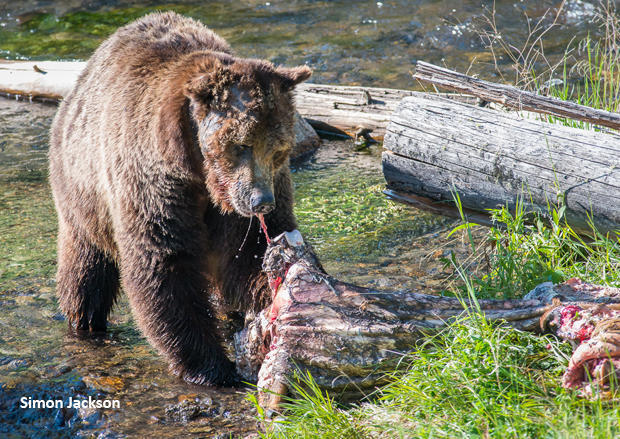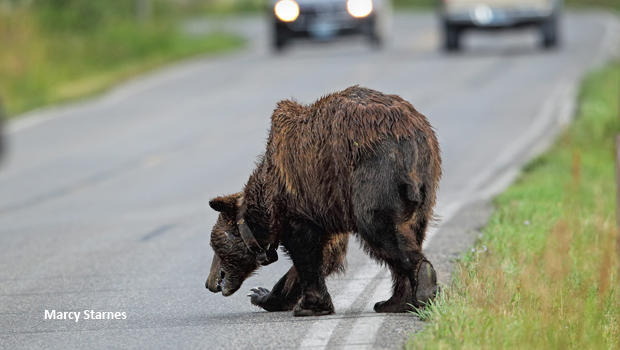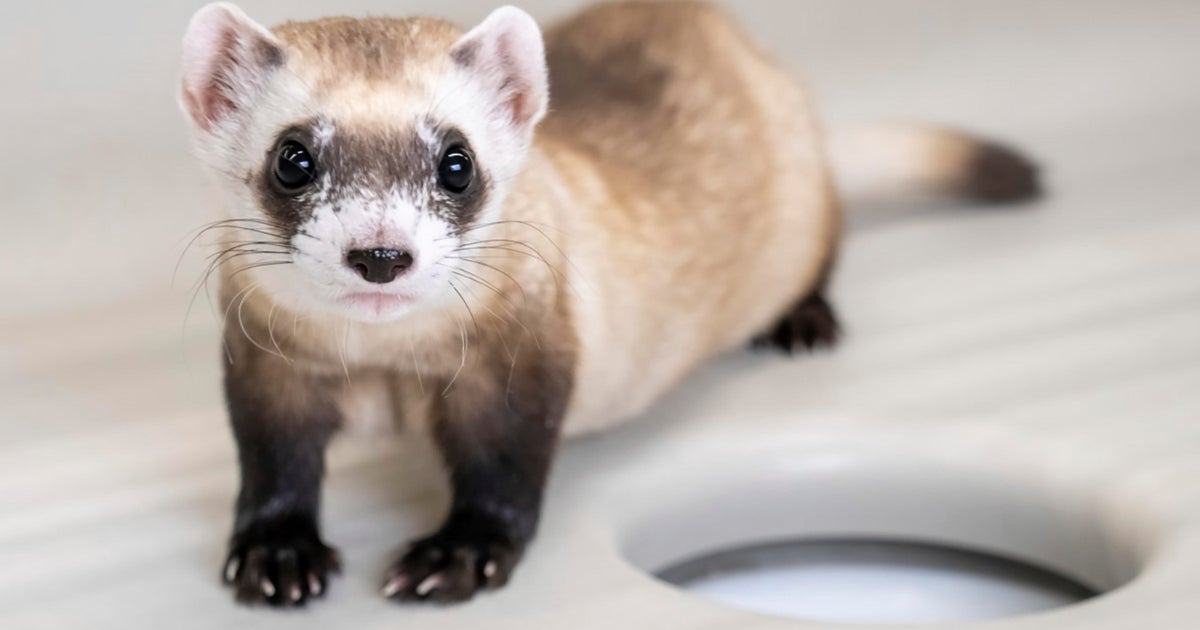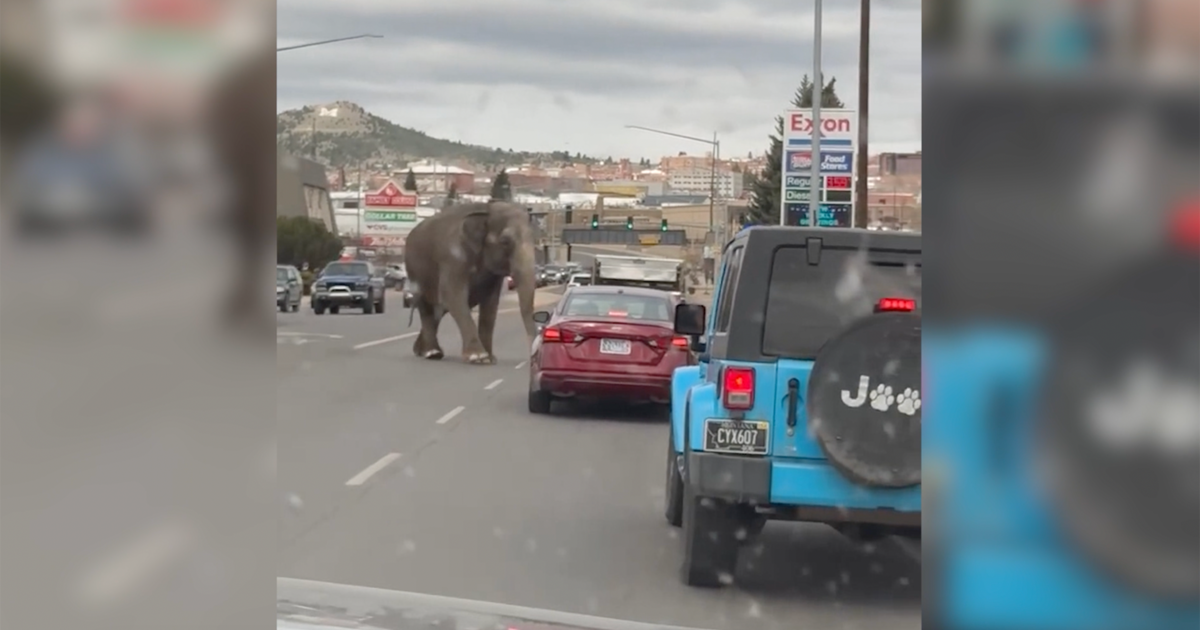Nature up close: What's in a number?
By "Sunday Morning" contributing videographer Judy Lehmberg.
In college, while majoring in wildlife science, my professors emphasized that the only scientific way to study animal behavior was to give your individual subjects numbers and record their behavior at timed intervals. To be objective, a true scientist had to refer to specific individuals by number only, not a name. It was unscientific to refer to an elephant as "Sophie"; rather, she must be "female elephant # 34."
That was the early 1970s, when a young woman with no science background named Jane Goodall had the audacity to study chimpanzee behavior, and to give her study animals names like "David Greybeard," "Flint" and "Goliath." Goodall went on to make major contributions to our knowledge, not only of chimpanzee behavior, but also redefining what it means to be human. Before her studies, humans were thought to be the only tool-using animal. Now we know many animals use tools.
The idea that the only way I could legitimately study an animal's behavior was to give it a number and record its behavior at very precise times was, luckily, not appealing to me. I say luckily because that led me to an extremely rewarding teaching career with summers spent learning animal behavior on my own, and in my own way, by just watching.
A few of those first summers were spent traveling and photographing all things wild. Then I learned, at my husband's urging, how to fly fish. For the next 25 years I spent my summers learning trout behavior. Or at least that's what I told myself was the reason I became such a fanatic fly fisher. I wasn't trying to catch every trout in the river; I was trying to learn what made a trout tick by tying flies and seeing which one worked best. (Yeah, right.)
About 12 years ago I rediscovered photography, only this time it was with a movie camera. One of my favorite places to film is Yellowstone, and like many of my photography friends, one of my favorite subjects is grizzly bears. At first I was thrilled just to film a grizzly doing anything, and since they spend most of their time either eating or sleeping, I have tons of footage of bears eating grass and sleeping.
In those early filming days, I began to hear the names of individual bears. Some of the names were assigned for obvious reasons; Bling, because she had two brightly-colored ear tags and a collar; Hobo, because he rode on his mom's back during his first year when the snow was slow to melt; Hayden Valley Girl, because she hung out in Hayden Valley; and Scarface, a boar grizzly who had obviously been in a lot of fights.
But I also heard about bears 610, 399 and 211. Wait! Some bears have numbers and some have common names? What gives?
The photographers named the bears by what they looked like. If you ever saw Scarface you would understand his name. But the bear researchers use numbers, and to them Scarface is 211. After listening to both the bear researchers and the photographers I began to realize an animal's name doesn't matter. All of us, whether we are park employees, photographers, or Yellowstone visitors, can fall in love with a bear named 610 just as readily as a bear named Blaze. Names don't matter, and the use of numbers doesn't make a bear biologist care any less about his study animals.
We have a friend, Simon Jackson, who amazingly has known Scarface since they were both cubs. Simon, first with his parents and more recently with his wife, Jill, has been visiting Yellowstone every year for more than 25 years. Simon says Scarface was known as the Chittenden Bear when he was a cub because he and his mom lived on Mt. Washburn near Chittenden Road. He was collared more times than most Yellowstone bears because he was always a sucker for a bear trap. He knew he would get a free meal, and would be released by the bear management team after they put a new collar on him, which he didn't seem to mind in the least.
Scarface became one of the best-known and most-loved bears in Yellowstone. He never did anything bad by human standards (like charge a tourist or raid a camp). In fact, I never saw him even look at a human. He had to know we were there, but he seemed to accept us as part of his landscape. He stuck to the business of finding food and surviving. And over the years he did that in every nook and cranny in Yellowstone.
We saw him in Hayden Valley one day and literally the next morning found him in Lamar Valley, 20 miles away. In his later years, he did a "walkabout," leaving Yellowstone all together, and spent about six weeks in the Beartooth Mountains, on the northeast side of the park. During that time he also had a girlfriend, something some people thought he was too old for.
Every year we anxiously awaited to see where Scarface would pop up. One thing we always knew was that when Simon arrived in Yellowstone, Scarface made an appearance just for him. The last summer anyone saw Scarface was in 2016. He had lost a lot of weight and his teeth were very worn down. My friend, Marcy Starnes, happened to be nearby just after he startled some visitors walking behind Roosevelt Lodge. They, understandably, used bear spray on him, but all he wanted to do was walk on the same trail they were using.
This photo was taken just after he was sprayed. His eyes had to really be burning.
By the fall of 2016 it appeared he hadn't put on enough weight to survive a long winter hibernation. When he didn't appear in the Spring of 2017 we began to assume he'd died in his sleep the previous winter. We were all sad but knew he had led a long and productive life. We mourned like you would a beloved uncle.
The following April, the Montana Fish and Game announced that an elk hunter, walking at night without bear spray, shot and killed Scarface in November 2016 just north of Yellowstone. Scarface wasn't stupid; he knew where to find an easy meal that fall: the gut piles left by elk hunters. We never heard why they waited so long to release the information. When he was shot, Scarface was 25 years old – fairly old for a grizzly.
Of all the bears in Yellowstone we never thought Scarface would be intentionally killed. He always totally ignored humans, so we thought humans (at least the ones with guns) would totally ignore him. For weeks stories appeared in newspapers all over the U.S. announcing the death of the most iconic bear in Yellowstone. As Simon Jackson said when he found out Scarface had been shot, "Scarface deserved to die on his own terms after all he gave Yellowstone, its visitors, and our world. We owed this iconic giant – and we owe all life – a place of their own. It doesn't mean animals are more important than humans, but it does mean that we can and should demand better of ourselves."
Scarface was known as Bear 211 to the Yellowstone bear management team. They are a wonderful, caring group who mourned his death the same way those of us that called him Scarface mourned. Whether we knew him by name or number we all loved him the same, and we will never forget him.
See also:
- Yellowstone National Park
- Yellowstone Bear Management Program
- To read more about Scarface go to Ghost Bear Institute
Judy Lehmberg is a former college biology teacher who now shoots nature videos.
For more info:
- Judy Lehmberg (Official site)
- Judy Lehmberg's YouTube Channel
To watch extended "Sunday Morning" Nature videos click here!






